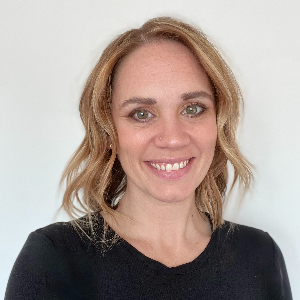The AAP’s New Breastfeeding Policy Advocates for More Parental Support

The updated report addresses the need for policy change, cultural awareness, and more to help new parents succeed in their feeding journey.
By Ashley Ziegler
It’s long been the American Academy of Pediatrics’ (AAP) recommendation that parents or caregivers who are able to breastfeed their children do so, as the health and developmental benefits of this practice are far-reaching. While this remains the official stance of the AAP, on June 27, 2022, the organization published a news release that announced an update to their existing breastfeeding policy report, and it’s being applauded by breastfeeding parents everywhere. Now, in addition to recommending breastfeeding, in general, the AAP is also advocating for increased support for breastfeeding parents and caregivers all across the board, from their healthcare teams to the government to insurance providers to their employers.
What Does the American Academy of Pediatrics’ Breastfeeding Policy Report Say, Exactly?
The updated policy report makes it clear that the AAP guidelines on breastfeeding are aligned with other highly regarded groups of experts including the World Health Organization (WHO), the Centers for Disease Control and Prevention (CDC), the American College of Obstetricians and Gynecologists (ACOG), the American Academy of Family Physicians (AAFP), and the Canadian Pediatric Society (CPS).
Additionally, the updated AAP policy highlights the scientifically proven benefits of breastfeeding, including lower rates of ear infections, obesity, respiratory tract infections, and severe diarrhea, as well as a lower risk of sudden infant death syndrome (SIDS). Specifically, they recommend parents exclusively breastfeed their babies until they are 6 months of age and then continue to breastfeed in tandem with nutritious solids for two years or more. Breastfeeding was previously recommended for at least one year.
The report also documents the estimated percentage of parents who breastfeed, with only around 46.3 percent of parents exclusively breastfeeding through the first 3 months of their infant’s life, which then drops down to only 25.8 percent by the 6-month mark. (Note: These numbers only represent babies who are exclusively breastfed; the percentages are much higher when supplementing parents are included.)
What the American Academy of Pediatrics’ Report Says about Breastfeeding Support
According to the report, healthcare providers’ goal is to see an increase in the number of breastfeeding babies by 2030. However, the AAP notes that in order for that to happen, there needs to be more widespread support of parents. One of the major forms of support the organization advocates for is through policies that protect breastfeeding, such as:
- Universal paid maternity leave
- The right of a [parent or caregiver] to breastfeed in public
- Insurance coverage for lactation support and breast pumps
- On-site childcare
- Universal workplace break time with a clean, private location for expressing milk
- The right to feed expressed milk
- The right to breastfeed in childcare centers and lactation rooms in schools
(Note: Women currently have the right to breastfeed in public in all 50 states, D.C., Puerto Rico, and the U.S. Virgin Islands; also, some of the other policy recommendations on this list are already enforced in certain states and territories across the country.)
The report also advocates for equitable, inclusive, and culturally sensitive medical care from healthcare providers supporting breastfeeding parents. It calls attention to the lower rate of breastfeeding for parents in the Black community as well as for low-income parents, parents 20 years old and younger, and parents with a high school education or less. The AAP recommends pediatricians address factors contributing to these disparities including “implicit bias, structural bias, and structural racism.”
Finally, the policy advocates for the support of gender-diverse parents in the LGBTQIA+ community, particularly because some of these families might not have easy access to human milk through breastfeeding. The AAP advises healthcare providers who are working with gender-diverse parents to ask about preferred pronouns, and it notes that “the term ‘chestfeeding’ may be more accurate and inclusive as it concerns lactation and physiology in gender-diverse families.”
In a time when it feels like, more than ever, parents are being left behind by the people in charge of our country, it’s encouraging to see the AAP not only looking out for our babies but also for us by advocating for the things we need in order to succeed as parents. Prior to this update, the AAP’s policy put the bulk of the responsibility on the parents, but this new version is a kind reminder that it’s impossible to expect that we do this alone. Because, as they say, it takes a village.








